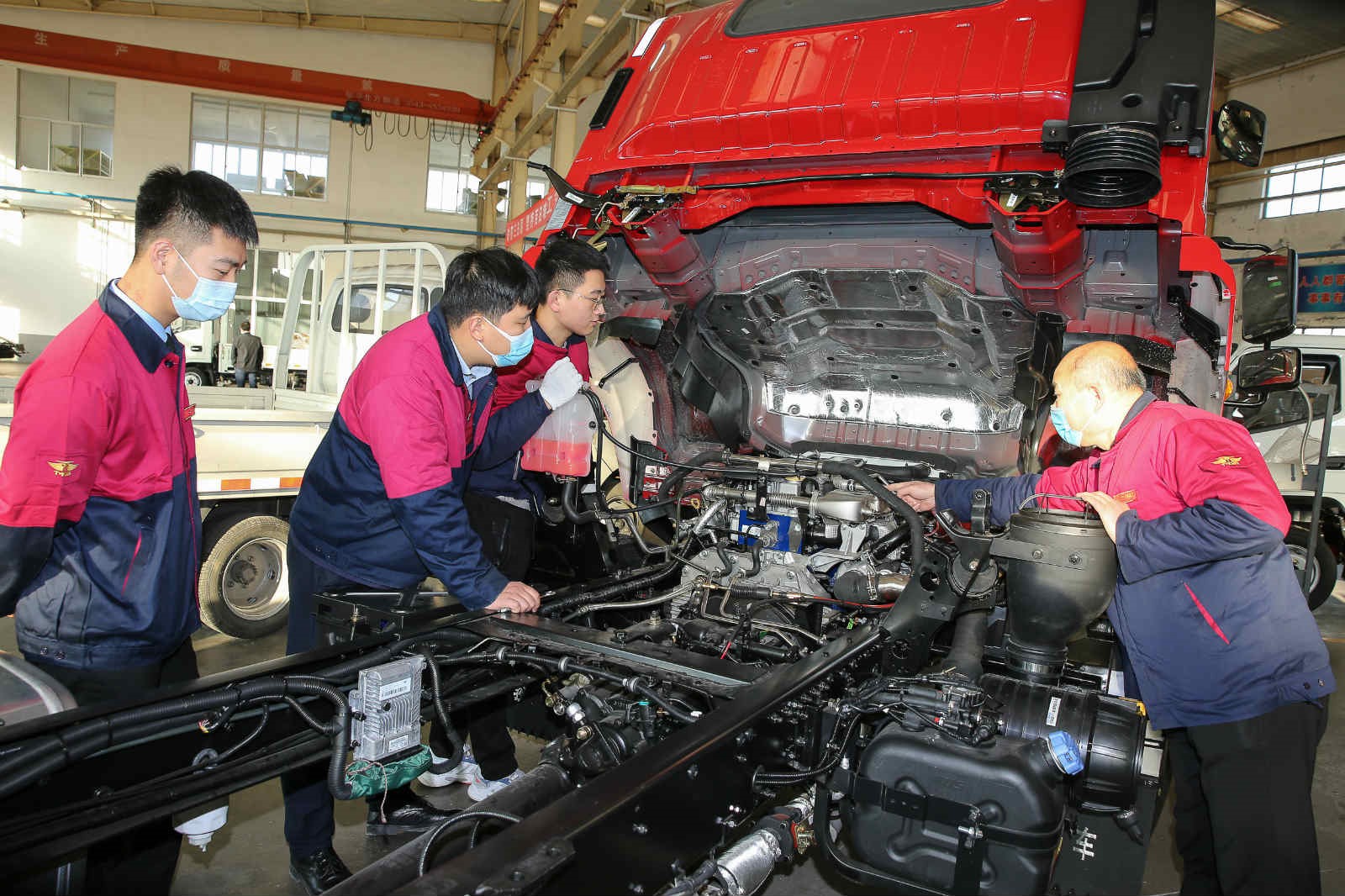

 |
| Photo taken on Jan. 28, 2021, shows automobile majors in Shandong Technician College of Water Conservancy, east China’s Shandong province, working as interns in Shandong Tangjun Ouling Automobile Manufacture Co., Ltd. Joining hands with companies in relevant industries, the college cultivates professionals and technical talents according to market demand. (People’s Daily Online/Zhai Shen’an) |
China ensured the overall stability of employment and secured better-than-expected results in stabilizing the job market in 2020, which is particularly precious, given that the COVID-19 pandemic hit the global economy hard last year.
The country created 11.86 million jobs in urban areas last year, exceeding its annual target of adding 9 million new urban jobs, according to recent data released by the country's Ministry of Human Resources and Social Security.
In December 2020, China's surveyed urban unemployment rate dropped to 5.2 percent, lower than its expected control target, official data said.
Due to the outbreak of the COVID-19, China's economy declined in the first quarter of last year. At the end of February 2020, the number of rural migrant workers fell by 54 million year on year, and the country's surveyed urban unemployment rate rose to 6.2 percent in the same month.
In addition, the country saw a total of 8.74 million students graduate from college last year, which added to the country's pressure in ensuring employment amid the COVID-19 pandemic.
Faced with grim job outlook, China basically curbed the spread of the virus in about one month after the outbreak and taken the lead in resuming work and production.
By March 2020, an average of over 95 percent of industrial enterprises above designated size in the country (except for its Hubei province which was severely hit by the epidemic) had resumed work, and an average of 80 percent of employees in enterprises had got back to their work.
As China continued to advance the resumption of work, production, and market, the country saw a gradual recovery in newly added jobs and a continuous growth in employment in urban areas.
In last June, China's surveyed urban unemployment rate fell to 5.7 percent, with the year-on-year increase narrowing down to 0.6 percentage points.
China's employment has withstood the test of the pandemic, which mirrors the country's remarkable achievements in balancing epidemic prevention and control with economic and social development, as well as China's unique institutional advantages and people-centered development philosophy.
Recently, the fact that China's GDP witnessed a V-shaped recovery on a quarterly basis in 2020 has drawn wide attention on social media platforms.
In fact, the country's employment stability has reflected the strong resilience of the Chinese economy.
Last year, China's courier sector handled over 80 billion parcels, a growth rate of over 30 percent, creating jobs for more than 200,000 people. Meanwhile, the country's foreign trade volume hit a record high.
In 2020, China's economy grew against the trend, with economic structure being optimized continuously, the quality of economic development improving gradually, demand for labor rising constantly, and employment rebounding and growing steadily.
At the same time, the country's stable employment has ensured sufficient labor supply for economic recovery and injected strong impetus into continuous economic recovery.
Employment is the cornerstone of people's wellbeing. Stabilizing employment has played a prominent part in the country's efforts to contain the epidemic and boost economy, and received unprecedentedly strong policy support from the Chinese government.
From February to December last year, China cut old-age, unemployment, and work injury insurance premiums worth 1.54 trillion yuan ($240 billion) for enterprises and individuals.
In 2020, the country distributed a total of 104.2 billion yuan of unemployment insurance premium refunds to 6.08 million enterprises, and allocated 100 billion yuan of employment subsidies as well as special awards and subsidies to stabilize employment.
By rolling out various measures to create jobs and ensure employment, China has eased fluctuations in its labor market as much as possible, and enabled its employment to survive the pandemic sound and safe.
China has not only maintained the stability of its job market, but optimized the employment structure, enriched the possibilities of employment, and diversified people's choices of occupations.
New occupations such as digital operations engineer, online education provider, food stylist, travel experiencer and health manager continue to emerge and become increasingly popular among job hunters.
China is seeing increasing new areas and ways of employment, thriving new forms of business, and emerging new occupations, which have expanded employment channels, and added new potential and resilience into the job market.
 |

 Award-winning photos show poverty reduction achievements in NE China's Jilin province
Award-winning photos show poverty reduction achievements in NE China's Jilin province People dance to greet advent of New Year in Ameiqituo Town, Guizhou
People dance to greet advent of New Year in Ameiqituo Town, Guizhou Fire brigade in Shanghai holds group wedding
Fire brigade in Shanghai holds group wedding Tourists enjoy ice sculptures in Datan Town, north China
Tourists enjoy ice sculptures in Datan Town, north China Sunset scenery of Dayan Pagoda in Xi'an
Sunset scenery of Dayan Pagoda in Xi'an Tourists have fun at scenic spot in Nanlong Town, NW China
Tourists have fun at scenic spot in Nanlong Town, NW China Harbin attracts tourists by making best use of ice in winter
Harbin attracts tourists by making best use of ice in winter In pics: FIS Alpine Ski Women's World Cup Slalom
In pics: FIS Alpine Ski Women's World Cup Slalom Black-necked cranes rest at reservoir in Lhunzhub County, Lhasa
Black-necked cranes rest at reservoir in Lhunzhub County, Lhasa China's FAST telescope will be available to foreign scientists in April
China's FAST telescope will be available to foreign scientists in April